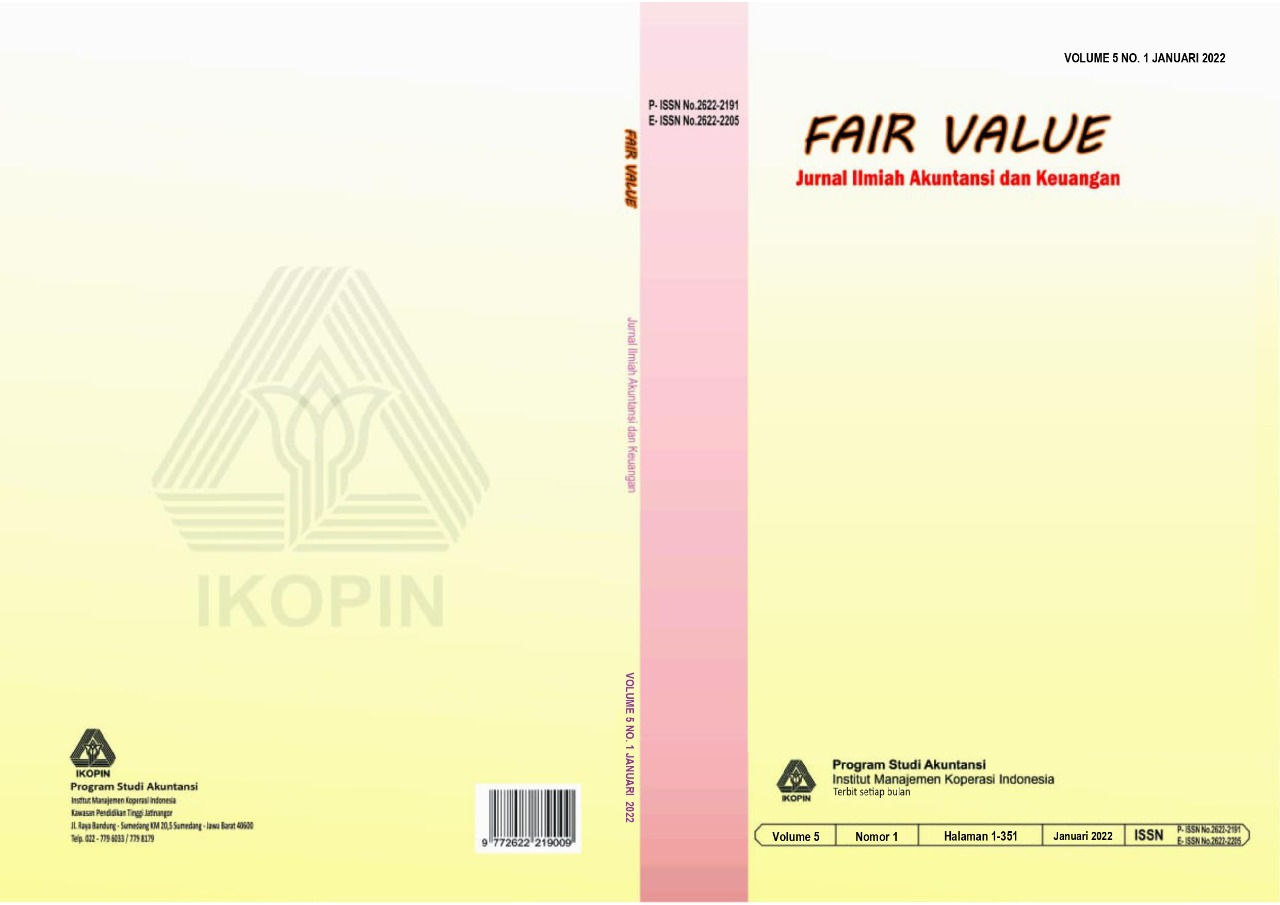Pengaruh struktur kepemilikan terhadap mekanisme IT governance berdasarkan kerangka cobit 5 dengan budaya Hofstede sebagai intervening
Main Article Content
Abstract
This study aims to examine the effects of Hofstede's five cultures, namely Power Distance (PD), Individualism (IC), Uncertainty Avoidance (UA), Femininity (MF), and Confucian Dynamism (CD) as well as ownership structure, which is divided into two, namely business ownership by individuals / families and business ownership by corporations / non-families on the quality of IT Governance implementation in companies seen by the CobiT 5 Framework, especially from the Evaluate, Direct and Monitoring Domain. This study provides a theoretical contribution regarding the adjustment of the COBIT model needed to be implemented in developing companies in Indonesia; especially in Central Java, it will also provide empirical evidence regarding the influence of Hofstede's cultural dimensions on IT governance in the COBIT 5 framework, especially in the EDM domain; and this study found, that for the overall relationship, only the Confucian Dynamism variable has a significant influence as an intervening between the Ownership Structure variable and IT Governance, which is due to certain principles and views for running a business that influence company owners in determining policies on IT Governance that will be used to support company operations.
Article Details
References
Anggraini, F. R. R., Nurim, Y., & Harjanto, N. (2015). Pengujian peran perlindungan investor dan kultur terhadap perilaku manajemen laba pada perusahaan keluarga: Studi internasional. Jurnal Bisnis Dan Ekonomi, 22(2), 113–128. https://www.unisbank.ac.id/ojs/index.php/fe3/article/view/6689
Ardianingsih, A., & Ardiyani, K. (2016). Analisis pengaruh struktur kepemilikan terhadap kinerja perusahaan. Pena: Jurnal Ilmu Pengetahuan Dan Teknologi, 19(2), 97–109. https://doi.org/https://dx.doi.org/10.31941/jurnalpena.v19i2.368
Ariffin, Z. (2020). Which dimension of the hofstede cultural value as the most determining predictor to the differences in organizational behavior. JWM (Jurnal Wawasan Manajemen), 8(2), 149–163. https://doi.org/https://doi.org/10.20527/jwm.v8i2.45
Armia, C. (2016). Pengaruh budaya terhadap efektivitas organisasi : Dimensi budaya hofstede. Jurnal Akuntansi Dan Auditing Indonesia, 6(1), 103–117. https://journal.uii.ac.id/JAAI/article/view/870
Dintrans, P. (2013). Maximizing business value through effective IT governance. Cognizant 20-20 Insights.
Gunawan, B., & Pratama, F. A. (2018). Perancangan tata kelola teknologi informasi. Andi Publisher.
Himmah, D. F. (2013). Pengaruh dimensi budaya hofstede terhadap deviant workplace behavior. Studi pada karyawan Kantor Pelayanan Pajak Pratama Singosari. Jurnal Ilmiah Mahasiswa FEB, 2(1).
Hofstede, G., & Hofstede, G. J. (2017). Hofstede : Cultures and organizations - software of the mind. McGraw-Hill.
Iorgulescu, A., & Marcu, M. (2015). The relationship between national culture and organizational culture. Social Sciences and Education Research Review, 98(2), 93–98. https://www.ceeol.com/search/article-detail?id=761551
Marpaung, L., & Mas’ud, F. (2017). Gaya kepemimpinan yang diinginkan karyawan (Studi pada badan pengembangan sumber daya manusia daerah Provinsi Jawa Tengah). Diponegoro Journal of Management, 6(4), 1–14. https://ejournal3.undip.ac.id/index.php/djom/article/view/18001
Nugroho, H. (2013). Analisis budaya organisasi sebagai faktor kontigensi dalam penerapan tata kelola IT di Politeknik Telkom. Seminar Nasional Sistem Informasi Indonesia, 2–4.
Nurcahyanti, Y. (2017). Pengaruh budaya organisasi terhadap struktur, proses, dan relational mechanisms tata kelola TI (Studi kasus: perusahaan BUMN di Indonesia) (Tesis). Institut Teknologi Sepuluh Nopember Surabaya.
Petta, B. C., & Tarigan, J. (2019). Pengaruh kepemilikan institusional terhadap kinerja keuangan melalui struktur modal sebagai variabel intervening pada perusahaan manufaktur yang terdaftar dalam Bursa Efek Indonesia (BEI). Business Accounting Review, 5(2), 625–634. https://publication.petra.ac.id/index.php/akuntansi-bisnis/article/view/6638
Sodik, A., & Putri, R. R. (2019). Pengaruh budaya terhadap desain web menggunakan pendekatan hofstede. INTEGER: Journal of Information Technology, 4(2), 1–6. https://doi.org/https://doi.org/10.31284/j.integer.2019.v4i2.521
Too, E. G., & Weaver, P. (2014). The management of project management: A conceptual framework for project governance. International Journal of Project Management, 32(8), 1382–1394. https://doi.org/https://doi.org/10.1016/j.ijproman.2013.07.006
Wulandari, E., Atrinawati, L. H., & Putra, M. G. L. (2022). Perancangan tata kelola teknologi informasi dengan menggunakan framework cobit 2019 pada PT XYZ Balikpapan. DoubleClick: Journal of Computer and Information Technology, 5(2), 127–138. https://doi.org/http://doi.org/10.25273/doubleclick.v5i2.10067

